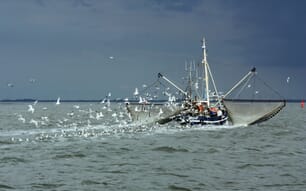Jimmy Avery, aquaculture leader with the Mississippi State University Extension Service, said years of pond acreage reductions are driving fish prices up. Unfortunately, the cost of producers biggest expense, feed, is also setting record highs. The end result could challenge consumers to afford this US farm-raised product.
Feed costs have gone up about 120 per cent in the last 10 years. In 2000, producers were paying about $192 per ton for feed. This year, producers have paid as high as $441, he said. Over that same time period, fish went from 75 cents per pound to $1.27 per pound.
Avery said the first ponds taken out of production were older and were the least productive, but as feed costs increased, even the more productive farms have turned to more profitable row crops. For now, high fish prices have stopped the acreage decline.

We are not sure how long the industry can maintain production at these costs, Mr Avery said. Producers are spending a lot of money to grow fish. Processors have to pay a lot to buy fish to meet their orders, and all those costs impact prices at the grocery stores.
The fish shortage helps farmers receive top dollar for their product, but it means processing companies must adjust production schedules to stay afloat.
Harry Simmons of Simmons Catfish in Yazoo County is a producer, a processor and a consumer. He sees all angles of the industry and can only wish he knew the future.
At these price levels, its hard to know what the supply situation will be next spring, Mr Simmons said.
I dont know if supplies will continue as tight as they have been because demand may not be quite as good if consumers choose cheaper products. The long-term health of the industry will depend on the value consumers place on US farm-raised catfish.
Mr Simmons said the industry has been hurt by imports that compete with US farm-raised catfish.
Mr Avery said in addition to the cost challenges, producers have had to contend with more disease problems this year than in the past several years.
Growers are pushing hard to grow their fish as quickly as possible to take advantage of price and to help processors meet their needs. This effort contributes to stress on the fish, he said.
Some of the diseases have been related to the erratic weather temperature - going back and forth from hot to cold.
Diseases have caused more fish losses than normal.

